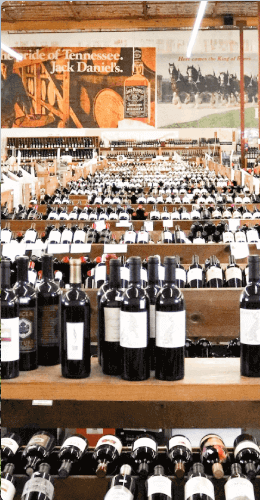Climate Change’s Impact on White Wine Production

In many world regions wine production, a realm where tradition and terroir still reign supreme, faces a profound transformation. Driven by rising temperatures and shifting weather patterns, climate change is leaving its indelible mark on vineyards. While the impact on red wine production is often discussed, the changes occurring in white wine production are equally significant. How will climate change reshape the landscape of white wine production, from non-traditional grape varieties to shifting growing regions and evolving winemaking techniques.
Warming Winters and Early Budbreak
Climate change's most visible impact on white wine production begins with the vine itself. As temperatures rise, winters become milder, and the risk of frost damage during the dormant season diminishes. While this may seem beneficial, it comes with challenges. Early spring temperatures trigger budbreak – the point at which vines awaken from winter dormancy and new shoots emerge. This earlier budbreak can expose young shoots to the threat of late spring frosts, which devastate vineyards. To mitigate this risk, some vineyards employ frost protection measures such as wind machines and overhead sprinklers, but these solutions are not always foolproof or sustainable.
Wine Grape Varieties and Adaptation
As temperatures continue to rise in many areas, such as Bordeaux, Bourgogne, and even Champagne, the suitability of traditional white wine grape varieties in their historical growing regions is being called into question. Some classic white wine grape varieties, like Chardonnay and Sauvignon Blanc, thrive in cooler climates, producing wines with vibrant acidity and nuanced flavors, as in Chablis. However, as these regions become warmer, the grapes may ripen too quickly, resulting in lower acidity and a loss of the delicate aromatics that make these wines exceptional. Winemakers are increasingly exploring alternative grape varieties that can withstand higher temperatures while maintaining the desired flavor profile. This help keep wine enthusiasts who buy wine online happy. Varieties like Albariño from Spain, Vermentino from Italy, or Grüner Veltliner from Austria are gaining recognition as they adapt well to warmer conditions.
Shifting Growing Regions
Climate change has already prompted a shift in the geographic regions where white wine grapes can be successfully cultivated. Cooler regions are finding it increasingly challenging to maintain the traditional quality and style of their white wines. Winemakers venture to higher altitudes and more northern latitudes in search of suitable terroirs. For example, from France, white wine production is expanding northward to regions like England, where sparkling wines made from Chardonnay, Pinot Blanc, and Pinot Meunier are gaining acclaim. Additionally, regions once considered too cool for white wine production are now experiencing ideal conditions for varietals like Chenin Blanc, Riesling, and Grüner Veltliner.
Harvest Timing and Sugar Levels
Rising temperatures affect the timing of white wine grape harvests. Warmer climates lead to earlier ripening, which result in higher sugar levels in the grapes at harvest. While this may sound positive, it can pose challenges for winemakers aiming to produce balanced white wines. Higher sugar levels can lead to wines with elevated alcohol content and reduced acidity, resulting in a loss of freshness and finesse. To address this, winemakers may opt for earlier harvests or explore winemaking techniques like whole-cluster pressing, which can help preserve acidity and control sugar levels.
Winemaking Techniques and Innovation
Innovative winemakers will adapt their production techniques to cope with the changing characteristics of white wine grapes. They may employ temperature-controlled fermentation, use different yeast strains, or experiment with extended lees aging to enhance complexity and mouthfeel. In regions where warmer conditions affect the acidity of white wines, winemakers might employ techniques like acidulation to restore balance. Additionally, the trend towards natural winemaking, with minimal intervention and lower sulfur levels, is gaining traction as it allows the expression of grape character while minimizing the need for adjustments. This may require consumers to change their thinking regarding wine characteristics.
Sustainability and Adaptation
The wine industry, like many others, is increasingly embracing sustainable practices in response to climate change. Vineyard managers are implementing strategies such as dry farming, cover cropping, and organic and biodynamic farming to enhance soil health and reduce water usage. These practices not only contribute to environmental sustainability but also help vineyards adapt to changing conditions. Sustainable viticulture can improve the resilience of vineyards by promoting biodiversity and reducing the risk of pests and diseases, which can be exacerbated by rising temperatures. Preserving old vines, too, helps because they boast better resilience and adaptability.
Climate change is undeniably altering the landscape of white wine production, presenting both challenges and opportunities. While the traditional winemaking regions face the need to adapt grape varieties and techniques, emerging regions are becoming new hotspots for white wine production. Winemakers, ever resourceful and innovative, are rising to the occasion, exploring alternative grape varieties, shifting to higher altitudes, and implementing sustainable practices to mitigate the impact of climate change. Check out some new white wine varieties next time you buy wine online!
As wine enthusiasts, we can also play a role by seeking out and appreciating the unique qualities of white wines born from these changing landscapes, with huge variety of options available with wine online. From the crisp and refreshing Albariño of England to the minerally Chenin Blanc of cool-climate regions, the evolving world of white wine offers a captivating journey of discovery. As we raise our glasses, let us savor not only the flavors but also the resilience of an industry that adapts and endures in the face of a changing climate. We hope you enjoyed this article from the best wine store USA!


















Leave a comment